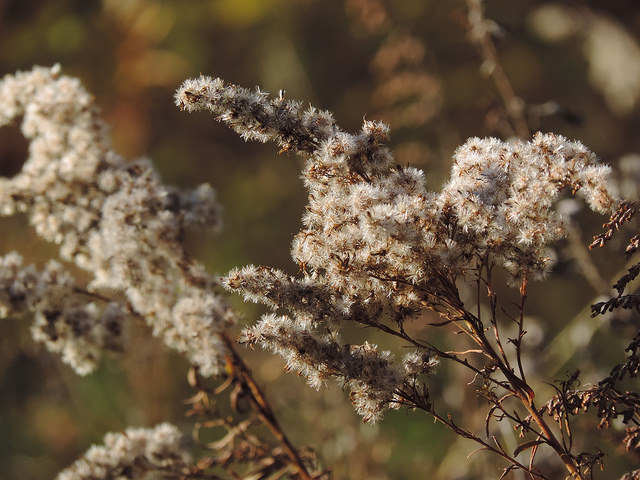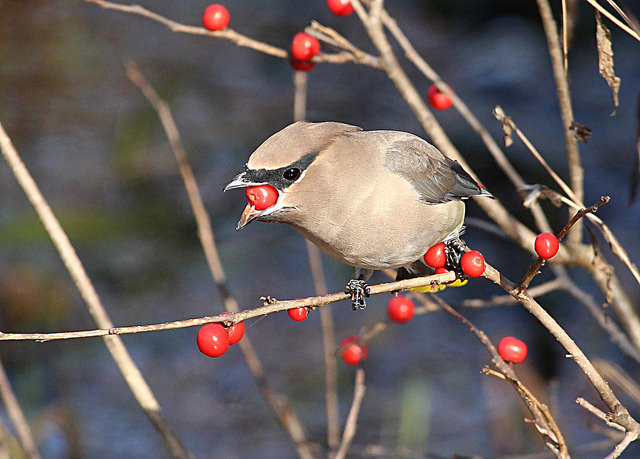November comes around each year with its early nights, brown landscape, and cloudy skies. Bleak is the word that comes to mind as I write this on day where there is a skim of ice on the pond, fog obscuring the distant tree line and pockets of leftover snow among the weeds. After the October warmth, the November chills shock. Harvests are wrapping up and we are settling in for winter. But underneath all this drabness is a glimmer, a gleam, a twinkle of hope.
Hope? Yes, hope. Plants make me hope. Plants, many of which end their brief life in the fall, also put out seeds to start life again. Their intention is not to start growing this time of year but to over winter and be ready for new life in some future spring.

Pine cones are abundant this year. Photo by Katie Finch
In each seed is everything needed to start life again. The plant’s entire genetic code travels in each seed, like a set of directions on how to grow and what to be. Protected by a seed coat, the embryo is the start. The endosperm nourishes the first sprout until it can begin that process unique to plants — photosynthesis. With its first root and leaves the plant can transform water, air and sunlight into the food it needs to grow.
But first these seeds need to spread out to a place where they are able to find these resources. Goldenrod, asters and milkweed send out seeds in the fall. Their seeds rest on the parent plant until a gust of wind comes along, dispersing offspring far and wide. Each seed is equipped with a parachute to catch the passing wind. Pine trees, their winged seeds released from the cones, are blown around and possibly down to the ground, if they are not eaten by squirrels or mice first.
Burdock doesn’t fly but waits with hooks for an innocent passerby. Like Velcro, the seeds can stick to animal fur or people’s clothes. They catch a ride to a potential new home.
Some seeds are covered in a tasty fruit, still hanging on to the plant after leaves have fallen. As crabapples, holly, and sumac berries are eaten and digested by birds, their seeds are spread in the inevitable desposit.
All these seeds, these little packages of hope, can land anywhere. A parking lot, a pond, a roof. Or a little patch of bare ground. There they take their one and only chance and send out a root, committing that plant to that spot, whatever it may hold — sun or shade, poor or rich soil, dry or wet earth, ‘til death does it part.

Goldenrod seeds in the sun. Photo by Katie Finch
They begin life anew in their new home after the cold of winter has passed and the first leaves can reach up to the sun again.
As people, we plant seeds, both in our garden and in young minds, hoping that one day they come to fruition. In that spirit, Audubon is hosting a Family Volunteer Day on
Saturday, December 2 from 10:00–11:30 a.m. Positioned in the midst of the holiday season, this event is an opportunity to give back to through volunteering. Designed for children 2-15 years of age and their favorite adult(s), volunteers can choose from a variety of different jobs. Each job supports the animals or visitors at Audubon throughout the year. Projects may include creating milkweed seed packets, assembling nest box kits, decorating Wild 5K give-a-way bags and more. Most jobs will be inside but there may be some outside jobs if the weather permits. Reservations ahead will help planning but walk-ins are welcome.
Audubon Community Nature Center builds and nurtures connections between people and nature. ACNC is located just east of Route 62 between Warren and Jamestown. The trails are open from dawn to dusk as is Liberty, the Bald Eagle. The Nature Center is open from 10 a.m. until 4:30 p.m. daily except Sunday when it opens at 1 p.m. More information is online at auduboncnc.org or by calling (716) 569-2345.
Katie Finch is a naturalist at Audubon.


Recent Comments